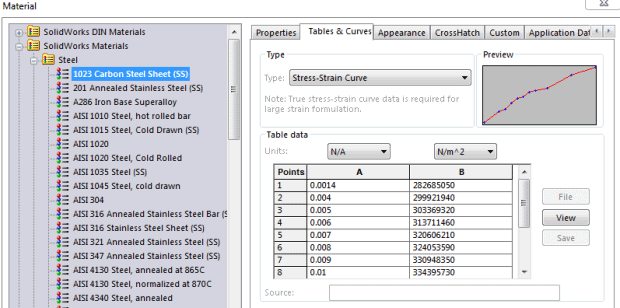Stress-Strain Curves and SOLIDWORKS Simulation
Recently, I helped a customer create a custom material for a Simulation study. This included the input of tensile test data to generate a stress-strain curve. Input might be generous as it was actually copying and pasting data from a spreadsheet into the custom material dialog. Data entry aside, sometimes you encounter a constraint that you either didn’t know or possibly forgot about. In this case, it has to do with the number of allowable data points for creating a stress-strain curve. Most input for SOLIDWORKS Simulation materials are limited to 1000 points of data. Not so with a stress-strain curve.
The data generated by the test lab included several hundred lines of stress and strain values, all measured during the tensile test of the specimen material. As Engineer’s, we like lots of data! When I copied and pasted these hundreds of lines into the material dialog box, however, Simulation indicated it was too much. The warning encountered was that only 200 data points are permissible.
The fix, of course, is to reduce the amount of data to 200 or less lines of input. Yes, there is an Enhancement Request to provide a method of smoothing out imported stress-strain data, but until that is implemented we must manually reduce the data.
While on the topic of stress-strain curves, there are some materials in the SOLIDWORKS Material Library that already include stress-strain curves. Look for any material name that has an (SS) at the end. The source of stress-strain curve data for those materials is the “Atlas of Stress-Strain Curves (2nd Ed.)”, published by ASM International. Also, if you’re performing a Fatigue study, there are some materials with S-N curves built in. Look for (SN) at the end of the material name.
Now go make your products better with SOLIDWORKS Simulation!

 Blog
Blog 
